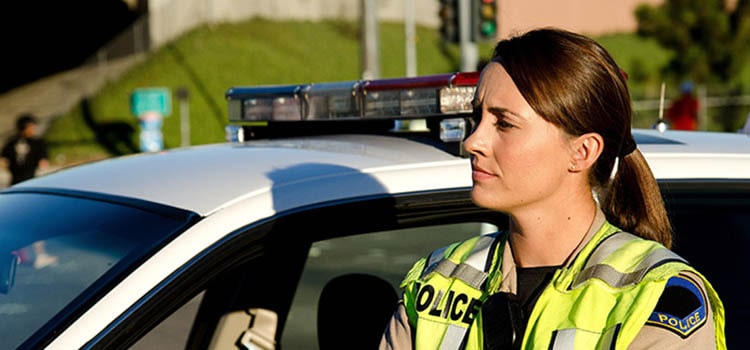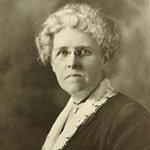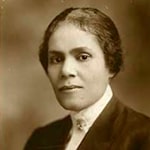September 21, 2021
Women in law enforcement—history, what to expect and why you should join

Although there were some women in law enforcement as early as the dawn of the 20th century, they worked mostly with other women and children, guarded female prisoners or were relegated to administrative duties with limited responsibilities.
Breaking through the glass ceiling wasn’t easy, especially for higher ranks within a police department.
Today, transformation is on the horizon for policing in the United States. New strategies like the 30×30 Initiative—a pledge to increase the participation of women in police recruit classes to 30% by the year 2030—could lead to a demographic shift in our police departments. These efforts to increase female recruitment may lead to more worthwhile careers in law enforcement for women.
In this Article
“It’s very fulfilling. It’s a good job if you want to do something that has a meaningful impact,” said recruiting Officer Taylor Reeves, who works for the Tacoma Police Department in Tacoma, Wash.
When she was in college, Reeves wasn’t sure what she wanted to do. After taking some criminal justice courses and doing a ride-along with a police officer, she realized she had found her calling.
“It really opened my eyes to the profession and I decided that’s what I wanted to do.”
Like Reeves, you may find that policing could be the fulfilling career you didn’t know was waiting for you.
A brief history of women in law enforcement
Today, women are integral members of police forces across the country and globally.
That didn’t happen without a lot of persistence over time and the valiant strides made by many trailblazing women in their communities.
The first females that worked in law enforcement held roles that were mostly of a social work nature. For example, women were employed as matrons of prisons where they looked after and guarded female inmates. These women were civilians, not sworn officers.
Early groundbreakers

Chicago-Daily Tribune Newspaper, Oct 28, 1906
Marie Owens was hired by Chicago’s health department in 1889 as one of five women tasked with enforcing a new city ordinance that prohibited the employment of children under 14. Two years later she was appointed to policewoman, the first in the history of the United States.

Portland Police Historical Society, 1915
In preparation for the 1905 Lewis and Clark Exposition in Portland, Oregon, a vice-policing program was created to protect young women from being trafficked and harmed during the convention. Lola Baldwin, a former teacher and social worker, was hired to lead the program. Her success in this and subsequent roles lead to her becoming the first sworn female police officer in the country in 1908.

The Crisis, March 1917
Georgia Ann Robinson was an avid community servant in Los Angeles where she was approached by a recruiter to join the city’s police department. She began volunteering for the LAPD in 1916, and was appointed to policewoman three years later in 1919. This made her the nation’s first known African-American policewoman.
Despite the strides made by these and other female pioneers in law enforcement, policing was and would remain a male-dominated profession. Many women in law enforcement either held administrative or volunteer positions, rather than being sworn officers. Those that were officers were typically tasked with patrolling and/or investigating matters of juvenile delinquency, the safety of women and children, domestic abuse, prostitution and more.
Legal advancement
The Civil Rights Act of 1964 created the Equal Employment Opportunity Commission (EEOC), which would enforce federal laws prohibiting workplace discrimination. Under Title VII, employers could no longer discriminate based on race, color, national origin, sex or religion. In 1972, Title VII was amended to give the EEOC authority to conduct its own legal action as a means of enforcement. These federal laws opened more doors for women to begin advancing up the ranks of law enforcement as female officers became more culturally accepted.
In 1985, Penny Harrington made history as the first female police chief of a major city in Portland, Oregon. Beverly Harvard became the first black female police chief when she was named Atlanta’s Chief of Police in 1994. Times were certainly changing, but there were still many obstacles for women in policing to overcome that are still being broken down today.
Benefits of women in law enforcement
Women in law enforcement bring a lot of unique strengths to the job, making them excellent candidates to be successful law enforcement officers. According to the 30×30 Initiative, research about women in law enforcement suggests that women officers:
- Use less force and unnecessary force
- Have fewer complaints and lawsuits filed against them
- Are perceived by the public as more honest and compassionate
- See better outcomes for crime victims, especially survivors of sexual assault
- Make fewer discretionary arrests, especially of non-white residents
Reeves affirmed that your identity can be advantageous when you’re dealing with people in the community because it can make relating to others easier.
“There’s also research on women in policing that shows that female officers seem [to the public] more approachable, more compassionate, especially with victims of sexual assault and stuff like that. It may be easier [for victims] to talk to someone that they can relate to a little better,” Reeves said.
Percentage of women in law enforcement
The 30×30 Initiative reports that women in law enforcement make up approximately 12% of all sworn officers in the United States. However, there is a great deal of variation in the percentages of women in different police agencies. In the Madison (Wisconsin) Police Department, for example, women make up nearly 30% of their police force already. Across the entire country, women hold only 3% of police leadership positions.
Challenges to women in law enforcement—and next steps
Like any profession that is dominated by a particular demographic group, it can be difficult for those in the minority to succeed and advance. Systemic, interdepartmental barriers as well as larger, cultural barriers can all affect someone’s experience. In 2018, the National Institute of Justice (NIJ) hosted a research summit to discuss the state of women in policing and identify research opportunities to address issues moving forward. A few takeaways made by the summit’s attendees included:
- Some police departments lack family-friendly policies that disproportionately affect women, such as rotating shift work, family leave or accommodations for pregnant or nursing officers. Promoting family-friendly policies will most likely encourage more women to join and stay on the force.
- Women are sometimes deterred from policing because the requirements of police academy training do not accurately reflect the skills and abilities needed to be a successful officer, particularly the physical requirements. Recent changes in the military’s physical fitness requirements for women may be a good reference point to initiate change at the law enforcement level.
- There is extensive anecdotal evidence of female law enforcement officers facing harassment in the workplace, but there have not been many empirical studies to examine this issue. Many female officers stated that police departments have weak and/or complicated harassment policies and complaint procedures. They suggested that funding studies to investigate harassment against female officers and amending ineffective harassment policies can make policing more accessible to women.
- Many women in law enforcement feel that the lack of other women in their departments and male-centric networking activities make it difficult to network and receive mentorship. Connecting women to statewide or national networks so that they have ample mentorship opportunities will benefit women’s careers in law enforcement and support recruitment and retention.
The landscape of women in policing today could change drastically over the next decade. The 30×30 Initiative will almost certainly have an impact on the demographic makeup of police officers in the country, which will likely lead to some cultural shifts as well.
“I think it’s kind of eye-opening for departments to look internally and see what they can do to change the culture and the perceived culture of departments,” Reeves said. “I think departments overall will become more diverse and more inclusive in the workplace to accommodate the next generation of people coming in.”
Why you should consider a career in law enforcement
As a recruitment officer, it’s Reeves’ job to talk to people and tell them about what it’s like to be a police officer. Even with its challenges, Reeves said that she has a rewarding career and wants people to consider the job even if they’ve never considered a career in law enforcement before.
“We encourage everyone of different backgrounds to apply,” Reeves said.
Some of the reasons that Reeves recommends the job include:
- It’s a gratifying role. “It’s a very rewarding career because you do get to help people. Unfortunately you see people at their worst, but you can make their day better because you’re able to help them,” Reeves said.
- It has variety. “Most officers are not sitting behind a desk. You get to go out and help and talk to people in the community. There’s such variety that you can find something that fits you in this career,” Reeves said.
- It’s a stable job with good benefits. Reeves said that officers usually have good retirement and benefit plans, and that is certainly worth considering.
If you think you may want to be a police officer, Reeves recommends reaching out to departments directly to learn more about what they do or participate in a ride-along, if possible. It may also be worthwhile to research criminal justice programs, which can give you a great educational foundation for a career in law enforcement.


